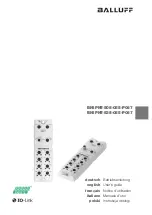
4-22
|
ni.com
Chapter 4
Analog Input
M Series devices use AI Sample Clock (ai/SampleClock) and AI Convert Clock
(ai/ConvertClock) to perform interval sampling. As Figure 4-13 shows, AI Sample Clock
(ai/SampleClock) controls the sample period, which is determined by the following equation:
1/Sample Period = Sample Rate
Figure 4-13.
Interval Sampling
AI Convert Clock controls the Convert Period, which is determined by the following equation:
1/Convert Period = Convert Rate
Typically, this rate is the sampling rate for the task multiplied by the number of channels in the
task.
Note
The sampling rate is the fastest you can acquire data on the device and still
achieve accurate results. For example, if an M Series device has a sampling rate of
250 kS/s, this sampling rate is aggregate—one channel at 250 kS/s or two channels
at 125 kS/s per channel illustrates the relationship.
Posttriggered data acquisition allows you to view only data that is acquired after a trigger event
is received. A typical posttriggered DAQ sequence is shown in Figure 4-14. The sample counter
is loaded with the specified number of posttrigger samples, in this example, five. The value
decrements with each pulse on AI Sample Clock, until all desired samples have been acquired.
Figure 4-14.
Posttriggered Data Acquisition Example
Pretriggered data acquisition allows you to view data that is acquired before the trigger of
interest, in addition to data acquired after the trigger. Figure 4-15 shows a typical pretriggered
DAQ sequence. AI Start Trigger (ai/StartTrigger) can be either a hardware or software signal. If
Ch
a
nnel 0
Ch
a
nnel 1
Convert Period
Sa
mple Period
0
2
4
3
1
AI
S
t
a
rt Trigger
AI
Sa
mple Clock
AI Convert Clock
Sa
mple Co
u
nter
4
















































